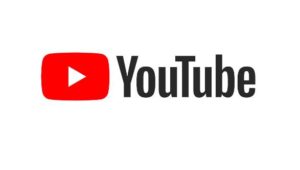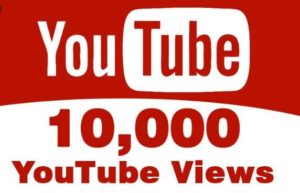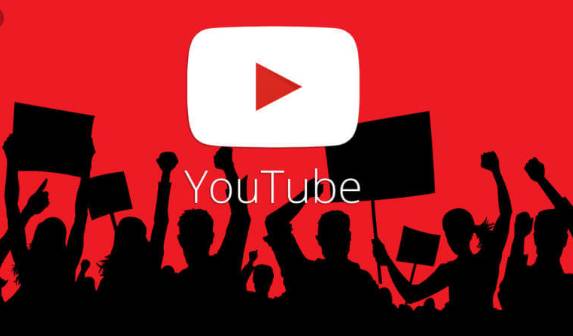New Youtube algorithm 2024: it’s important to know what’s new in order to know how to get more views.
More than 70% of the time spent on YouTube is dedicated to viewing the content recommended by the algorithm, according to Neal Mohan, the company’s product manager. In addition, the algorithm performs very well to know users’ tastes, so that on average, viewing sessions on mobile devices last 60 minutes.
However, the YouTube algorithm not only guides user behavior but it also significantly affects video creators. The subject of your video, its duration, its time of publication, the keywords that make up your metadata and the purpose of your calls to action: all these factors influence not only the performance of your video but also the success of your entire marketing strategy on YouTube.
This article brings together the latest information on the workings of YouTube, so your videos can claim their rightful place among the 400 hours of video uploaded every minute. Bonus: Our 8-step guide to developing your social media presence will help you develop an effective social media strategy!
YouTube algorithm evolution timeline
Before 2012: number of views
Until 2012 (when users watched only 4 billion hours of YouTube content per month, instead of a billion a day), YouTube ranked videos according to a single parameter: the number of views.
While this method was designed to reward better quality videos and place the most popular ones in front of the public, instead it has led to a clickbait problem. If the title of a video is misleading, it may prompt the user to click on it, but the user will quickly end viewing. This strategy, therefore, had a negative impact on quality, and therefore for advertisers, and therefore on the platform itself.
2012-2016: viewing time and session time
YouTube has reworked its algorithm to focus on viewing time as well as time spent on the platform in general (i.e., session time). Again, users have resorted to distressing strategies to counter the algorithm, such as taking as much time as possible before addressing the point of the video that everyone expects. (Although, to be honest, YouTube has never hidden the fact that sneaky optimization practices do not guarantee any results, and has always encouraged creators to focus on the quality of their content.)
At the same time, the algorithm for videos that can captivate viewers longer (which some creators interpreted as “longer videos” and which is not necessarily the case), the creators had to reduce the time they spent on each of their videos. They could no longer afford to offer high-quality, long and worked videos at regular intervals. No wonder five of YouTube’s top ten names in 2018 have climbed to the top of the charts by filming themselves playing video games.
2016: machine learning
Then, in 2016, YouTube published a white paper to explain the role of deep learning and machine learning in its recommendation system.
It couldn’t be clearer: youtube algorithm
Source: Deep Neural Networks for YouTube Recommendations, 2016
I’m kidding. We have obviously learned a lot about the algorithm, but it still retains many secrets.
Plus, it’s not perfect. YouTube has come under some criticism over the past two years. Some technology theorists have called its algorithm an “engine of misinformation” and a “tool of radicalization” because of its tendency to highlight videos about conspiracy theories, fake news or other increasingly disturbing content.
According to one study, the YouTube algorithm holds the same share of responsibility as those of Facebook and Twitter in creating the filtering bubble that influenced the 2016 U.S. presidential election.
As a result, YouTube continues to make changes to its algorithm, employing more human moderators, removing videos posted by watchdog journalists, and demonetizing content channels. Shocking.
2017: quality
In 2017, YouTube supposedly improved the quality of new videos highlighted, in order to reduce the visibility of “religious and provocative” content ».
2018: monetization
In early 2018, the change in YouTube’s monetization policy (which was not well received) reduced the number of content creators under active surveillance of the platform. However, just a few months later, CNN reported that it had discovered that advertisements from 300 major brands, including Adidas, Cisco, Hilton, and Amazon, appeared on channels promoting supremacist, Nazi, pedophile, and extremist discourse. Brands, therefore, had no guarantee that they would not be associated with content that tarnishes their image, even when choosing the “brand-safe” option when purchasing advertising space.
2019: “limit content” ban
In early 2019, YouTube announced that its algorithm would no longer recommend “limit content” that could harm viewers or misinform them.
Whether these changes will help advertisers, but first, let’s look at what we know about how the algorithm currently works.
How does YouTube algorithm in 2024 work?
YouTube informs us that “YouTube’s search and detection system has two objectives: to help users find the videos they want to watch, as well as to encourage interaction with viewers and their long-term satisfaction”
The algorithm influences the six places your video can appear on YouTube:
- In the search results
- In the streams of recommendations
- On the YouTube homepage
- In trend streams
- In channel subscriptions
- In notifications
The Youtube algorithm in 2024 filters recommendations Thanks to the 2016 white paper we mentioned earlier, we know that YouTube’s algorithm (or ai, if you prefer) tracks users’ perceived satisfaction in creating a personalized and addictive feedback stream.
In short, an artificial neural network filters videos to determine if they could be selected to appear in the user’s “To Follow” section (based on user history and content viewed by similar users).
At the same time, a second deep learning network ranks the videos by assigning them a score. The factors in determining this score remain secret, at least in part: we know that the degree of novelty and frequency of publication of a channel are part of it.
The idea is not to identify “good” videos, but to offer videos that correspond to the desires of users, the ultimate goal is that they spend as much time as possible on the platform (and therefore watch as many advertisements as possible).
In 2018, the US research center Pew Research has deduced that the more time users spend on YouTube, the more long and popular videos the algorithm will offer them.
http://webbspy.com/top-10-youtube-musicians-in-the-world-2021/
The 2024 Youtube algorithm ranks search results
YouTube search results depend on two main factors (and a host of more mysterious ones): If your video’s metadata (title, description, keywords) matches the user’s request. The engagement rate already recorded for your video (likes, comments, viewing time)
However, “the search results don’t match the list of the most-watched videos for a certain query,” insists YouTube (well, we’re the ones pointing it out).
What factors influence the YouTube algorithm in 2024?
According to YouTube, the behaviors of the users listed below influence the algorithm’s choices:
- Content that users are watching or not watching (i.e., impressions vs. readings)
- The amount of time users spend watching your video (viewing time or retention)
- The speed with which a video increases in popularity, or not (rapid change in view, growth rate)
- The level of novelty of a video (new videos can be promoted to allow them to gain popularity)
- The frequency with which a channel publishes videos
- The amount of time users spend on the platform (session time)
- I like, I don’t like, shares (commitment)
- “Not interested” reviews (aïe)
That being said, remember that the algorithm is complex, constantly evolving and for the most part incomprehensible (especially if you don’t work at Google).
While there is no guarantee other than (repeat with me) to create entertaining and quality content, here are some proven best practices to help you put your channel on the road to success.
Top 10 ways to get more views on YouTube in 2024
Below are the simple tricks to gain massive views on youtube using the latest algorithm in 2024;
- Use relevant keywords in titles
- Write a good video description
- Define your keywords
- Use your traffic sources to create new videos
- Transcribe your video
- Translate your video
- Create custom thumbnails
- Convince your viewers to watch the full video
- Don’t neglect the finale
- Make your viewers subscribe to your channel
Using these steps you could join the team of the Top 10 richest Youtubers in the world.
1. Use relevant keywords in titles
This applies to all of your metadata: the description, subtitles, and tags of your videos. (Tip: This doesn’t mean you can just grab a mishmash of unrelated words. Your human audience must be able to read a text that makes sense.) This will help you to optimize search results.
2. Write a good description of your Video
Write intriguing and accurate first lines, while taking care to use relevant keywords. YouTube prefers long and detailed descriptions, even if only the first lines are visible unless the user clicks “Plus.”
3. Define your keywords
Take advantage of your channel’s search report to find out what terms users are already using to find you. Be sure to use the same terms in the titles, descriptions, and keywords associated with your videos (as long as they remain relevant: getting users to click on your video will only compromise your ranking if they end their viewing after a few seconds).
4. Use your traffic sources to create new videos
If users find you using a keyword that you don’t use for your videos, ask yourself if it might be an approach angle for your next content to take advantage of.
5. Transcribe your videos
It is common for users to watch videos without turning on the sound, especially on their phone, so talk to them by incorporating subtitles. Automatically generated subtitles are available for some languages, but if you import your own subtitle file, it will also be indexed to search engines and will improve your ranking in the results.
6. Translate your video
Your potential audience includes users who don’t speak your language. YouTube encourages creators to expand their audience by offering translations of the titles, descriptions, and subtitles of their videos when they can. Translations are also indexed in search engines.
7. Create custom thumbnails
In addition to your title, the image you choose to represent your video plays a crucial role in the entertainment-seeking user. Keep this in mind: Ninety percent of the most popular videos on YouTube use their own thumbnail rather than an automatically generated image. Make it one of your priorities.
8. Convince your viewers to watch the full video
Ideally, your video has natural value and a captivating dimension, so viewers will watch it to the end. However, if you notice a drop in viewing time, test different tactics to add value at the end of your video. You can also link to strategic passages to redirect viewers to your other videos.
9. Don’t neglect the finale
Use frames, superimposed images, and end screens to guide viewers to other videos. These are clickable links that appear in your videos. Use it to direct viewers on your channel and your next video.
10. Make your viewers subscribe to your channel
Your number of subscribers isn’t just about flattering your ego: the more subscribers you have, the more organic the organic reach of your videos. Wait until you make your request when they are most likely to be seduced: after a joke, a surprise announcement or a twist. In addition, if these subscribers activate notifications, you’ve won everything: they’ll be notified of each of your new videos. Check out this list of popular YouTube channels for inspiration.
I am giving out extra tips to get more views on youtube in 2024 below just for you;
11. Create series, not unique videos
By creating a series of videos related to each other, you encourage viewers to watch more of your videos. You can also group relevant videos into a playlist so that they are automatically played one after the other, reducing the likelihood that a user will decide to go to another channel (or worse, put it End of its viewing session: remember, the total session time on YouTube affects the viewing time of your channel).
12. Make your promotion off-platform
Promote your YouTube videos on your blog, social networks, in your marketing emails, your email signature, etc. Take advantage of every communication tool. To learn more about this topic, check out our full list of tips to promote your YouTube channel.
13. Monitor your performance
Look at what works and what doesn’t, and why. See the dropout rate, subscriber behavior and the most active publishing hours. You can also identify which videos need to be updated or replaced. Enjoy our full guide on YouTube Analytics.

It’s really a cool and helpful piece of information. I’m glad that you simply
shared this helpful info with us. Please stay us informed like this.
Thank you for sharing.